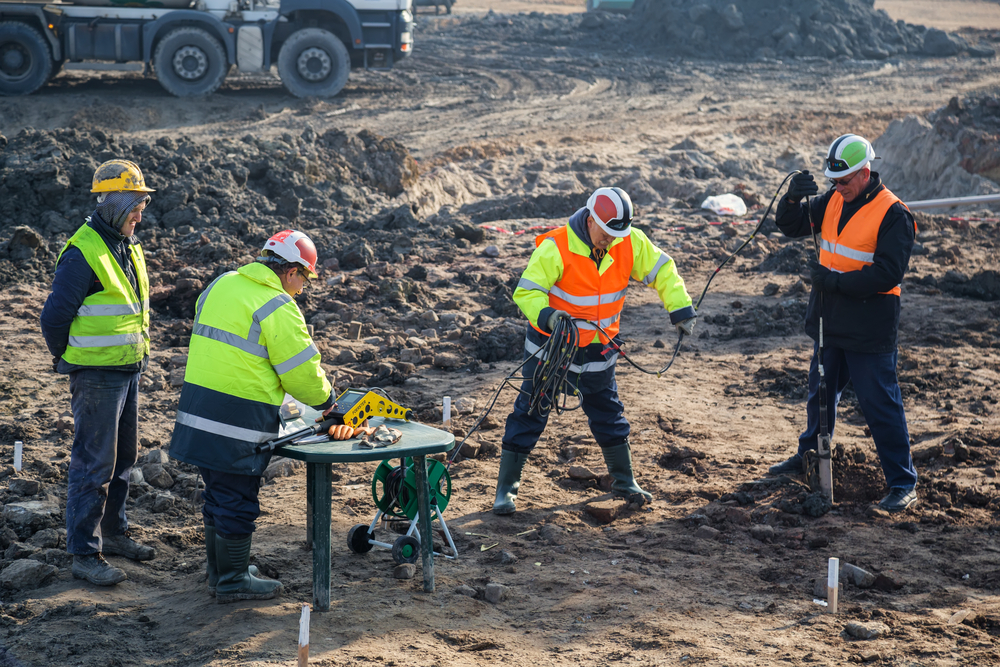The Main Principles Of Consulting Engineers
The Main Principles Of Consulting Engineers
Blog Article
Everything about Consulting Engineers
Table of ContentsThe 25-Second Trick For Consulting EngineersRumored Buzz on Consulting EngineersThe 10-Minute Rule for Consulting EngineersAll about Consulting EngineersHow Consulting Engineers can Save You Time, Stress, and Money.Consulting Engineers Fundamentals ExplainedConsulting Engineers Fundamentals Explained

A job in geotechnical engineering, like a lot of types of engineering, needs one to be a long-lasting trainee. One of the most essential qualities for a geotechnical designer is sound reasoning (read Ralph Peck's thoughts on the issue).
Getting The Consulting Engineers To Work
There are numerous interesting arising modern technologies in geotechnical engineering. Right here are a couple of instances: Ground enhancement making use of bio-inspired and bio-mediated geotechnicsRunout modeling and simulation of mass squandering eventsUse of sustainably sourced geomaterials As a geotechnical designer, one will certainly commonly have to very closely engage and function with various other professionals.
Geotechnical engineering is a part of civil engineering that focuses on exactly how planet materials like dirt, rock and groundwater connect with man-made frameworks, such as buildings, bridges, dams and roadways. The goal is to make sure that the subsurface - the geology beneath any kind of construction - is capable of supporting whatever is constructed on top.
Not known Factual Statements About Consulting Engineers
Their task is to check out the geological residential properties of the site - the dirt, the bedrock, the groundwater, the slope security - to analyse its suitability for the proposed building task. To identify possible risks and hazards like settlement, slope instability and groundwater seepage. They drill, take soil samples and use various examinations to perform this analysis.
The geological and geotechnical feasibility of your website, and how it compares to bordering sites. The geotechnical designer is then entrusted with crafting remedies to any type of identified problems, making use of principles of hydrology and dirt and rock auto mechanics to design structures that can securely support the weight and stress of the structures that will be constructed.
Little Known Facts About Consulting Engineers.
As a team, we prosper on open communication, knowledge sharing, and continual understanding. We foster a collaborative environment where diverse perspectives are valued and every person adds to group and project success. We buy expert growth, encourage cross-functional cooperation, and celebrate accomplishments together.providing elderly degree competence and mentorship to the engineering team, testing the status-quo with ingenious thinkingdeveloping cross-team interface arrangements to make certain structured processes to sustain our possession projectscontributing to the development of brand-new cable layout tools/software and leading the design deliverables for jobs to sustain the design and installationbuilding partnerships with industry partners and academic institutionssynthesising multiple geoscience datasets and recognizing how ground-based dangers influence technological and industrial a master's degree in civil or geotechnical engineeringhave comprehensive understanding of soil properties, ground-based danger and their influence on cord burial midsts, thermal rating, and installment methodsare skillful in numerical modelling and growth of geotechnical tools for evaluation and designhave considerable proven job experience in offshore power line installation/ design jobs, preferably with overseas experience are an exceptional team player and an excellent communicator in multi-disciplinary design teams with solid commercial awarenesshave solid technological leadership skills.
As an applicant or worker, you may request affordable job and placement accommodation or modifications by means of accomodation@orsted.com. click to read more Geotechnical designers are involved in all stages of the design of structures, from concept to construction. Their work is vital in the style and planning process as they assess the integrity of soil, clay, silt, sand, and rock, prior to building starting.
All About Consulting Engineers

We are always seeking methods to reduce danger, rise effectiveness, avoid injuries, and save cash. One method is by hiring a geotechnical designer. Geotechnical engineering is a specialization of civil engineering that focuses on the behavior and structural interconnected homes in between, concrete or other synthetic materials. Geotechnical evaluation is a requirement for anything that's built: on the ground, within the ground, in rock and made of dirt and rock.
The Facts About Consulting Engineers Uncovered

Without these considerations in mind when preparing your job, the problems that you're not planned for come to be costly and result in unanticipated hold-ups during your structure procedure. Industries which heavily rely upon geotechnical design: Transportation & Infrastructure Deep Foundation Underground Structures Ground Improvement & Soil Stabilization navigate here Scour and Erosion In a globe where a lot of what we do relies upon the stability and performance of our buildings, it is easy to see why geotechnical engineering holds an essential place in society.
This aids all stakeholders associated with a task to have a shared vision and avoid complication in the implementation stage. Read extra: BIM modern technology is being used in numerous aspects of the Architecture, Engineering, and Construction (AEC) sector. Different fields such as style, interior decoration, landscaping, city design, civil engineering, architectural engineering, her explanation and geotechnical design are accepting BIM to level up their specialist video game.
Some Of Consulting Engineers
Designers, geotechnical designers, and other job stakeholders can jointly add to a shared design, making certain everyone works from the very same details swimming pool. This collective environment minimises miscommunication, reduces errors, and boosts overall job coordination. Geotechnical design includes massive quantities of data, ranging from soil make-up to geological surveys. BIM assists in the assimilation of varied data sets into an unified digital design.
Report this page